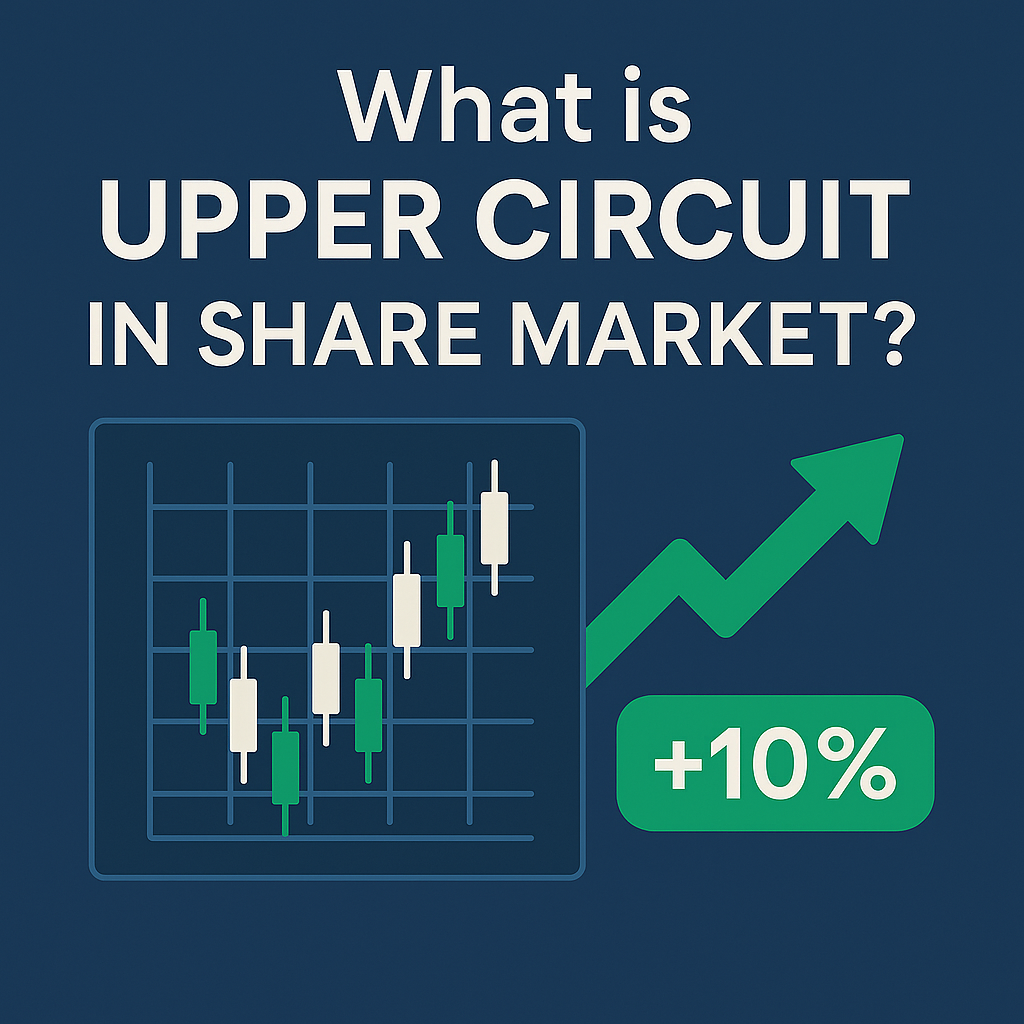Imagine a stock is doing so well that it shoots up like a rocket—suddenly, the trading for that stock gets paused. That’s the upper circuit in action!
If you’re new to investing or have just started tracking your favorite stocks, the term “upper circuit in share market” might seem confusing. Don’t worry—we’re here to break it down in the simplest, most human way possible.
1. What Is Upper Circuit?
The upper circuit is the maximum price limit set for a stock or index on a trading day. Once this limit is hit, no more buy orders are matched unless someone is willing to sell at that price.
In simpler words—if a stock is allowed to move only up to ₹100 from ₹90, and it hits ₹100, trading in that stock is either halted or restricted.
2. Why Does Upper Circuit Happen?
Markets can be volatile. Stocks can go up or down sharply due to news, rumors, or investor excitement.
To protect investors from unusual volatility and price manipulation, SEBI (India’s stock market regulator) imposes circuit limits.
When a stock rises too fast, the upper circuit acts as a “speed breaker.”
3. Who Sets the Upper Circuit Limit?
The stock exchanges (NSE and BSE) define upper circuit limits. These limits vary based on the stock and are generally set as a percentage of the previous closing price:
2%
5%
10%
20%
Highly liquid and stable stocks might have no circuit limits, while volatile small-cap stocks might have stricter caps.
4. What Happens When a Stock Hits Upper Circuit?
No buy orders can go through unless a seller is available.
Trading volume drops.
The stock often becomes illiquid for that period.
Prices stay frozen at the upper limit.
Retail traders might see “Buyer Freeze” messages on their trading screen.
5. Pros and Cons for Retail Investors
👍 Pros:
Protects you from sudden price bubbles
Offers time to reassess positions
👎 Cons:
You might not be able to exit or enter a trade
Prices may fall quickly the next day if demand drops
Understanding this mechanism helps in better decision-making.
6. How to Handle Trading During Upper Circuit
Here are a few smart strategies:
Don’t chase stocks that are already near upper circuit—this increases risk.
Book partial profits if your stock hits the limit.
Wait for the next trading session if you missed the move.
Track volume and news—check if the rally is driven by real data or hype.
Remember, sharp upward movement could reverse just as sharply.
7. Final Thoughts
The upper circuit in share market is a safety net designed to protect traders and investors from panic buying and market manipulation. It’s not something to fear—but something to understand and use wisely.
As a retail investor, keeping calm and being informed is your best advantage. The next time you see “Upper Circuit Hit” on your screen, you’ll know exactly what’s going on—and how to respond smartly.
📌 Table of Contents
What Is Upper Circuit?
Why Does Upper Circuit Happen?
Who Sets the Upper Circuit Limit?
What Happens When a Stock Hits Upper Circuit?
Pros and Cons for Retail Investors
How to Handle Trading During Upper Circuit
Final Thoughts




